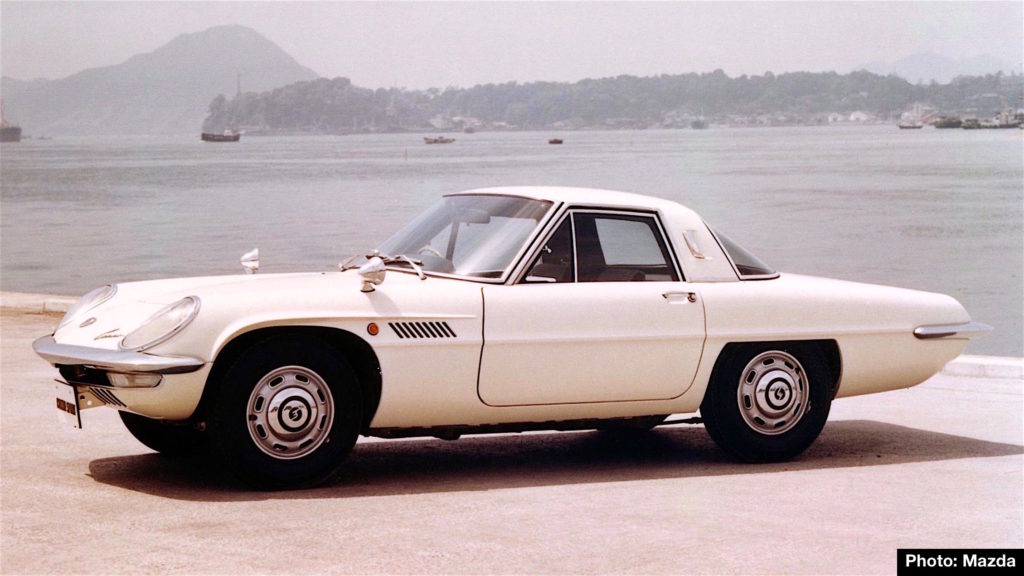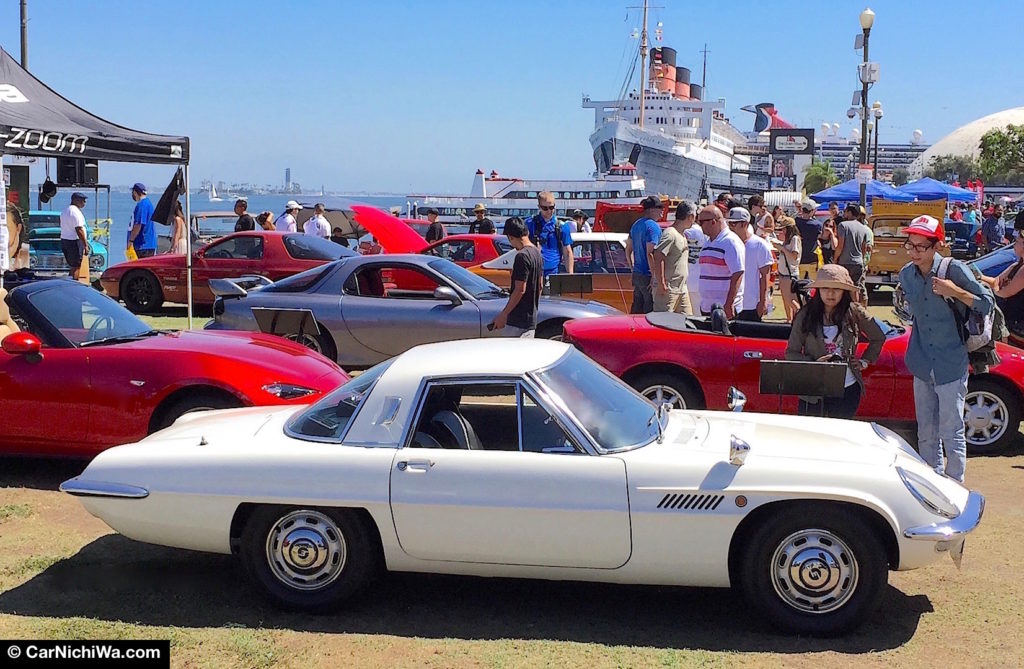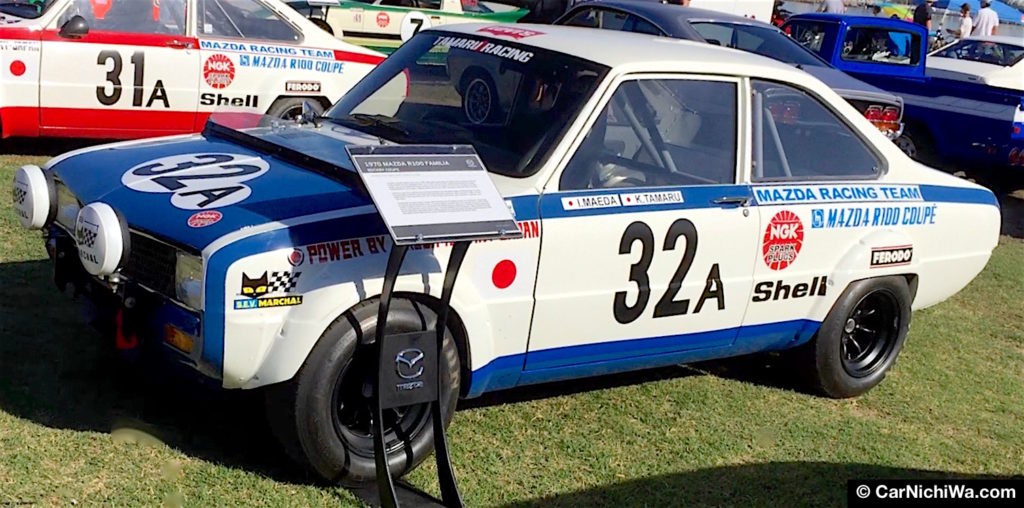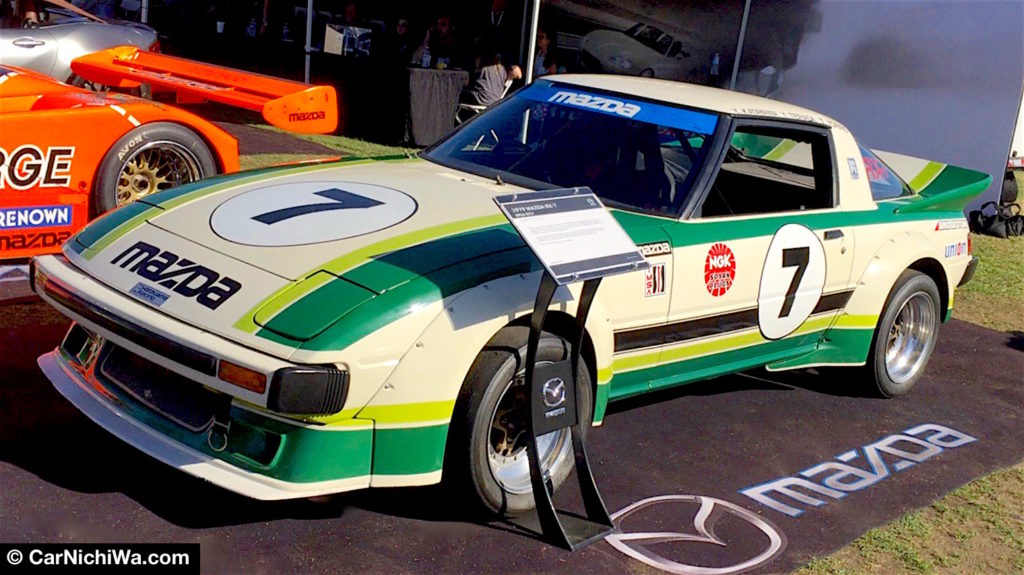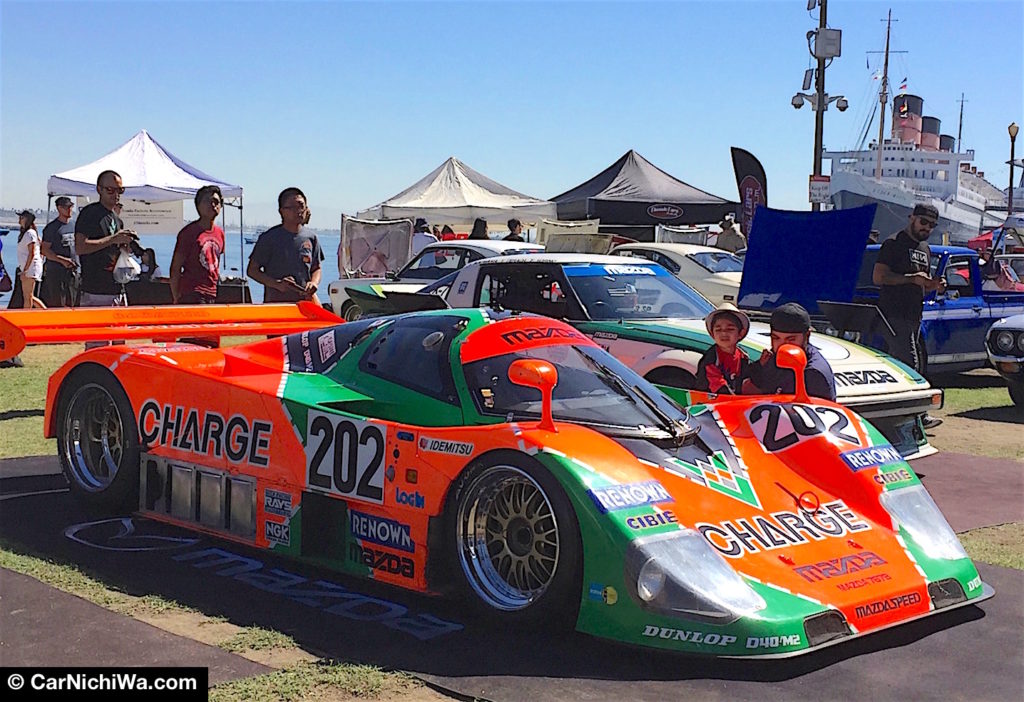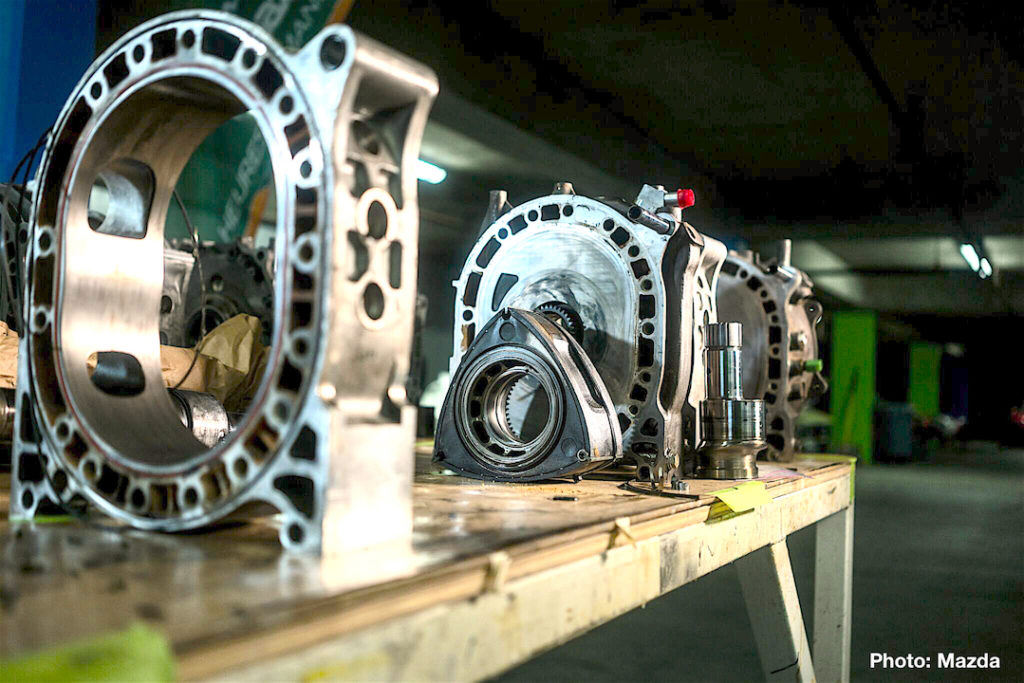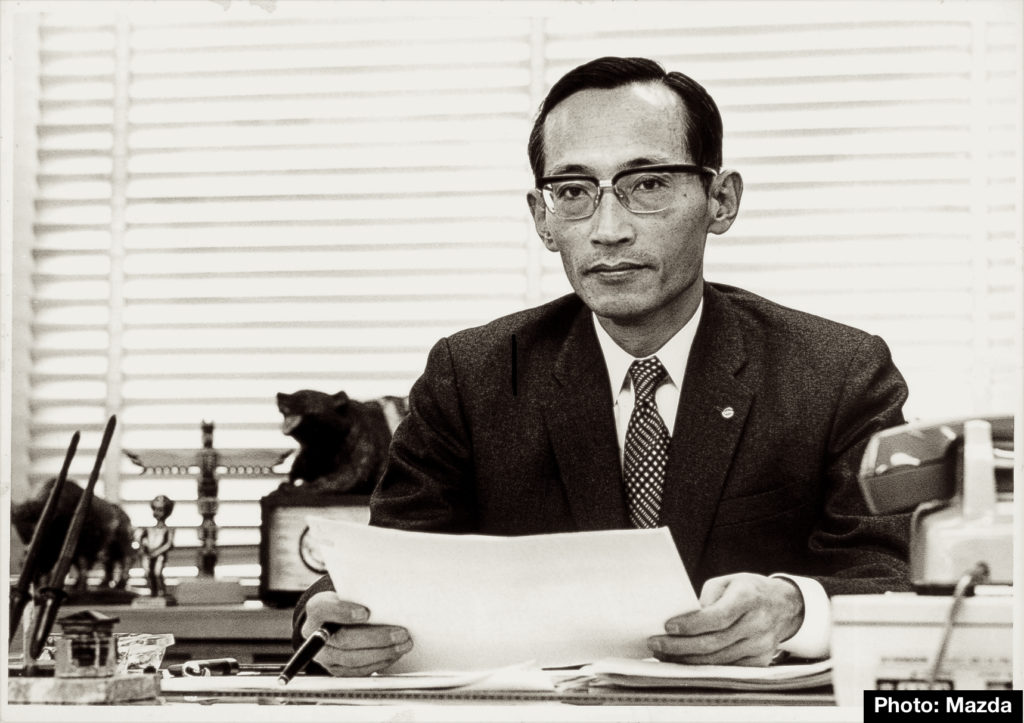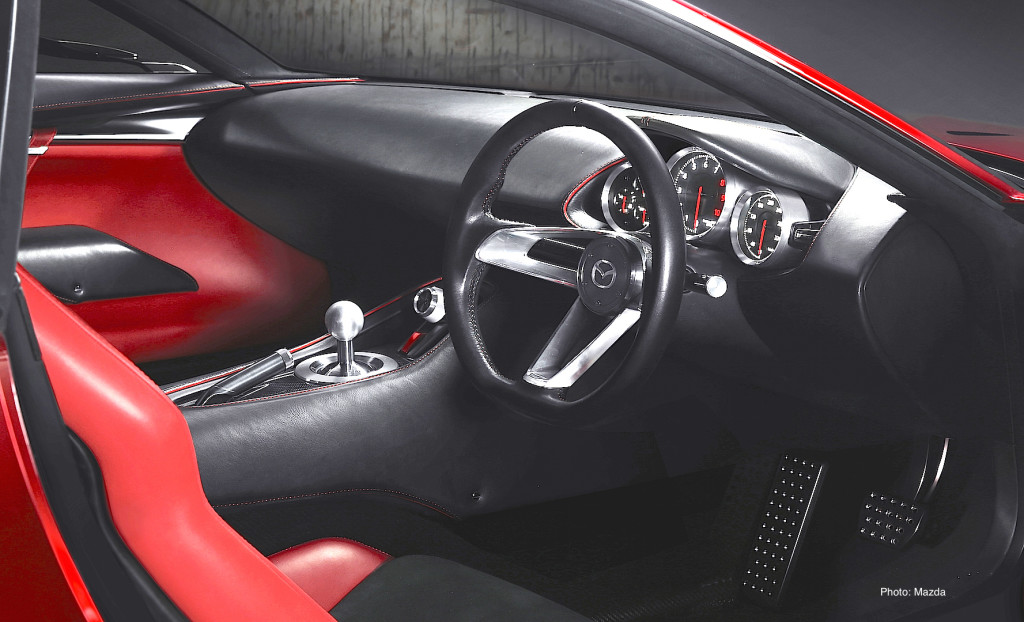By Steve & Tamami Laser
This year is filled with major milestones for auto enthusiasts. We covered the 50th anniversary of Japan’s legendary sports car, the Toyota 2000GT, by returning to the Toyota Automobile Museum in Nagakute to wish it a happy birthday.
Today is another significant golden anniversary in Japan, this time for Mazda, as the company celebrates its first rotary engine powered vehicle. After debuting at the 1964 Tokyo Motor Show, the Mazda Cosmo Sport 110S went on sale in Japan on May 30, 1967. As the world’s first production twin-rotor, rotary-engined car, just 1,176 production Cosmo Sports were built.
The Cosmo Sport remains a rare sight in the U.S., continuing to attract considerable attention 50 years after it was launched. Mazda brought this beautiful example to the annual Japanese Classic Car Show (JCCS) in Long Beach, Calif. in 2015 (above) and again in 2016 (see our video below).
Mazda had a spectacular display of rotary engine vehicles and racing cars at last year’s Japanese Classic Car Show. (video © CarNichiWa.com)
While we didn’t have a chance to go to Japan for the Cosmo’s 50th anniversary, we were lucky to attend last fall’s JCCS where Mazda displayed beautifully restored rotary engine racing cars.
Mazda began its involvement in motorsports in 1968, following the release of the Cosmo Sport. Mazda described the rare 1970 racing car above as, “The Mazda R100, known outside Japan as the Familia Rotary Coupe, sporting a two-rotor 10A engine. The R100 won its race debut at the 1969 Singapore Grand Prix with longtime Mazda driver Yoshimi Katayama (1940-2016) behind the wheel.”
This RX-7, owned by Mazda North American Operations, is a 1979 RX-7 GTU. Mazda said, “After an exploratory effort with two factory entered RX-3s in the 1978 Daytona 24-hour race, Mazda returned in 1989 with two immaculately prepared RX-7s for the GTU class. Two cars ran strongly with the Japanese drivers’ car (piloted by Katayama and two others) in fifth overall and took the GTU win.”
The highest point of Mazda’s development of the rotary engine was in 1991, when the quad-rotor-powered Mazda 787B won the famed 24 Hours of Le Mans. The 1989 767B Group C Prototype above owned by Mazda was at Le Mans earlier, “In 1989 this car finished ninth overall, completing 365 laps. It also had two GTP class victories that year in the All Japan Sports Prototype Championship.”
The rotary engine had a pretty rocky start. The story, told by Mazda, goes like this: “Mazda, then called Toyo Kogyo Corporation, needed to create a unique technology that would differentiate it among a rapidly globalizing Japanese automotive industry in order to stay independent. In 1961, Mazda licensed NSU Motorenwerke AG and Wankel GmbH’s rotary engine technology, sharing learnings with the German companies in hopes of making wider use of the engine.”
“Once the prototype rotary engine arrived in Hiroshima, testing began. Unfortunately, within the first hour of running, the engine seized. Mazda had wagered its entire existence on this one engine technology; failure would not be an option, but early impressions meant there was much to be done to keep Mazda afloat.”
“Knowing how imperative the success of the rotary engine would be for the company, Chief Engineer Kenichi Yamamoto (above) assembled a team of Mazda’s most talented engineers, known as the 47 Samurai, to make the rotary engine viable. Of course, they knew other automakers from around the world had tried or were trying to do so as well; none had succeeded, though.”
Mazda adds that eventually, those efforts would spawn championship-winning motorsports programs all over the world, as well as leading the way for subsequent sports cars that focused on lightweight performance over brute strength. During its production, more than 1.99 million rotary-engine vehicles were produced.
So what’s next for the rotary? We were fortunate to attend the last Tokyo Motor Show in 2015 where Mazda unveiled the gorgeous RX-Vision sports car concept. (video © CarNichiWa.com)
Mazda never stops thinking about the rotary and there’s always the chance that it could one day find its way back into production. Along those lines, Mazda debuted the RX-Vision at the 2015 Tokyo Motor Show.
It’s unlikely a car like the RX-Vision will be built. However, we don’t think Mazda has given up on the rotary since it’s such a vital part of the company’s history.
News source and photos (as noted) courtesy of Mazda North American Operations, Mazda Motors UK Ltd. and Mazda Motor Corp.
Story (commentary) videos and photos (as noted) © 2015-2017 CarNichiWa.com
